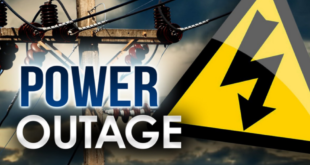Hurricane Lane continues its track toward Hawaii as a Category 4 hurricane. Today we are providing resources which are available specific to Hawaii to assist both tourists and residents.
Governor David Ige urged all residents to put up 2 weeks supply of food and water. Residents of all islands should expect electrical outages, some for long periods of time.
FEMA has dispatched numerous emergency management teams from the west coast to assist those resident in Hawaii.
The state does not have sufficient shelter spaces for all residents/visitors and are urging those in flood prone locations to relocate to locations which are not susceptible to flooding.
The state report issued earlier this year said that while Hawaii has a population of about 1.4 million people, there are only 277,376 available shelter spaces.
Here’s the island-by-island breakdown of shelter space:
- Oahu: 182,797 shelter spaces
- Big Island: 36,539 shelter spaces
- Kauai: 17,395 shelter spaces
- Maui: 40,645 shelter spaces
According to the Central Pacific Hurricane Center, Hurricane Lane will bring hurricane force winds to the islands on Friday, 24 August in the very early morning hours - 0200 HST for the county of Hawaii … 1400 HST for the county of Maui and Honolulu … and 0200 HST Saturday for the county of Kauai.
The National Weather Service Honolulu shows increasing showers throughout the Big Island and Maui County with the remainder of the islands to experience same later in the afternoon.
Hurricane Lane has degraded somewhat since the previous advisory as southwesterly shear impacts the cyclone. Radar has shown prolonged heavy rainfall and already extreme rainfall totals. Visit https://t.co/fUefWa9aTA for a full list of current watches and warnings #hiwx pic.twitter.com/bu8tL89TqH
— NWSHonolulu (@NWSHonolulu) August 23, 2018
Hawaii County
The Big Island is under a hurricane warning. Residents and visitors to Hawaii County should avail themselves to the county emergency alert system -
Hawaii County Emergency AlertThe county warns, “Hurricane Lane has stalled causing conditions of heavy rain and flooding continuing since last night. Dangerous driving conditions and flooding are occurring from Waipio Valley south to Volcano. You are asked to stay off the roads due to extreme hazards created by the heavy rainfall. This heavy rainfall is expected to continue due to Hurricane Lane stalling. The positive side of this is that all immediate threats of rain, wind, and surf to the west side of the island have diminished for now.”
Big Island Emergency SheltersMaui County
Residents and visitors to Maui County should avail themselves to the county emergency alert system -
Maui Emergency AlertThe county is under a hurricane warning and a flash flood watch - Expect rain to fall at the rate of approximately 1-2 inches per hour, today 23 August. They are urging all to stay away from streams, drainage ditches and low lying areas prone to flooding.
Maui Emergency SheltersHonolulu County
Residents and visitors to Oahu County should avail themselves to the county emergency alert system -
Oahu Emergency AlertA hurricane warning is in effect for all of Oahu.
Open shelters in Oahu are provided - you MUST bring your own food, water and other emergency supplies with you.
Oahu Emergency SheltersKauai County
A hurricane watch is in effect for all of Kauai - it is expected to be raised to a warning within the next 24-36 hours.
Residents and visitors to Kauai County should avail themselves to the county emergency alert system -
Kauai Emergency AlertKauai Shelters Status Map is available -
Kauai Emergency SheltersWe recommend reading our alert from 22 August which contains preparedness tips and livestream links:
Securely Travel Alert - Hawaii - Brace for Category 4-5 Hurricane Lane
FEMA Advice for Hurricane preparedness and survival
When a hurricane is 6-18 hours from arriving
- Turn on your TV/radio, or check your city/county website every 30 minutes in order to get the latest weather updates and emergency instructions.
- Charge your cell phone now so you will have a full battery in case you lose power.
When a hurricane is 6 hours from arriving
- If you’re not in an area that is recommended for evacuation, plan to stay at home or where you are and let friends and family know where you are.
- Close storm shutters, and stay away from windows. Flying glass from broken windows could injure you.
- Turn your refrigerator or freezer to the coldest setting and open only when necessary. If you lose power, food will last longer. Keep a thermometer in the refrigerator to be able to check the food temperature when the power is restored.
- Turn on your TV/radio, or check your city/county website every 30 minutes in order to get the latest weather updates and emergency instructions.
Survive DURING
- If told to evacuate, do so immediately. Do not drive around barricades.
- If sheltering during high winds, go to a FEMA safe room, ICC 500 storm shelter, or a small, interior, windowless room or hallway on the lowest floor that is not subject to flooding.
- If trapped in a building by flooding, go to the highest level of the building. Do not climb into a closed attic. You may become trapped by rising flood water.
- Listen for current emergency information and instructions.
- Use a generator or other gasoline-powered machinery outdoors ONLY and away from windows.
- Do not walk, swim, or drive through flood waters. Turn Around. Don’t Drown! Just six inches of fast-moving water can knock you down, and one foot of moving water can sweep your vehicle away.
- Stay off of bridges over fast-moving water.
Be Safe AFTER
- Listen to authorities for information and special instructions.
- Be careful during clean-up. Wear protective clothing and work with someone else.
- Do not touch electrical equipment if it is wet or if you are standing in water. If it is safe to do so, turn off electricity at the main breaker or fuse box to prevent electric shock.
- Avoid wading in flood water, which can contain dangerous debris. Underground or downed power lines can also electrically charge the water.
- Save phone calls for emergencies. Phone systems are often down or busy after a disaster. Use text messages or social media to communicate with family and friends.
- Document any property damage with photographs. Contact your insurance company for assistance.
 Travel Securely Securely Travel
Travel Securely Securely Travel




